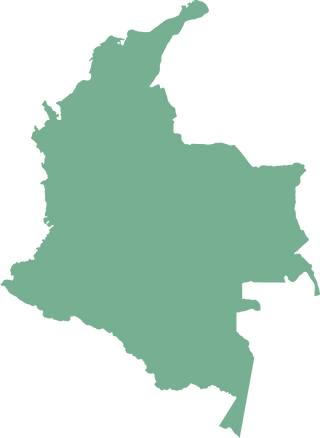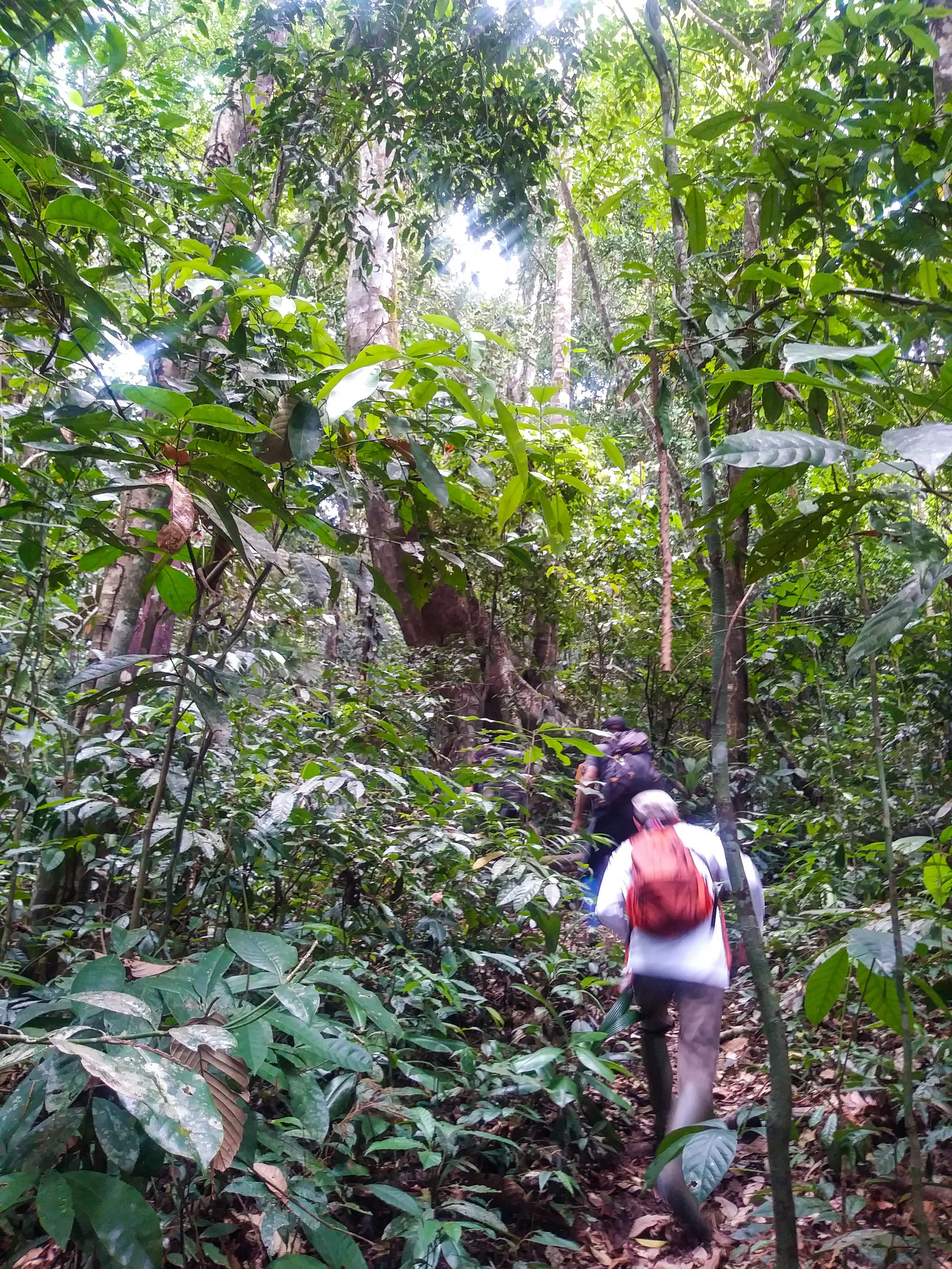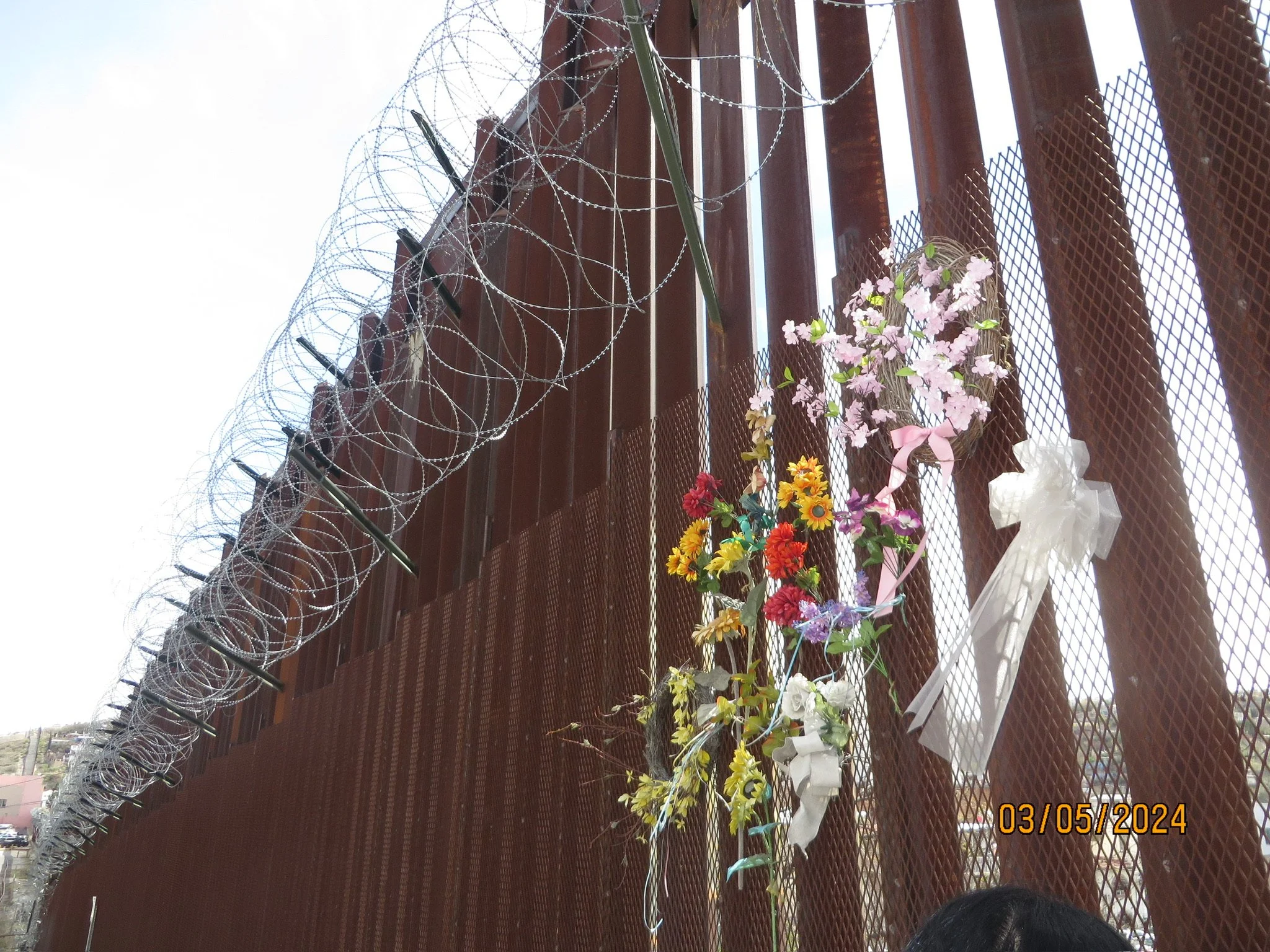Lesson Objectives
Trainees will be able to:
Identify the major physical barriers that migrants throughout the Americas cross and the dangers they face when doing so.
Understand how access to resources—or lack thereof—significantly shapes the physical aspect of the migration journey.
Recognize that the changing face of Latin American migration is a region-wide phenomenon and not unique to the United States.
Introduction
Deciding to migrate is the first part of a long journey characterized by physical obstacles spanning the Americas. When moving within Latin America, migrants often cross multiple national borders including the Darién Gap, the perilous border between Colombia and Panama. Once at the U.S.-Mexico border, migrants face physical dangers on both sides and when crossing, whether legally or unauthorized. After arriving in the U.S, the physical journey continues with movement within the U.S., motivated by a variety of factors often related to social networks and perceptions of opportunities in specific locations, especially work.
Movement within Latin America
The Americas are facing unprecedented levels of region-wide migration—both in magnitude and makeup. As of October 2023, over 22 million people are on the move in the Western Hemisphere. In fiscal year 2023, 2.5 of these 22 million migrants came to the U.S.-México border.
This region-wide dynamic is most clear in the case of Venezuelan migrants. While the United States has received large numbers of Venezuelans, four out of five of Venezuelan migrants (or 6.5 of the 7.7 million Venezuelan migrants globally) are now living in other parts of Latin America and the Caribbean.
Four out of five Venezuelan migrants live in other parts of Latin America and the Caribbean
of Colombia’s total population is represented by Venezuelan migrants
By October 2022, Colombia alone had received over 2.89 million Venezuelans since 2010
México is also grappling with this changing migration dynamic and is, for the first time, becoming a destination country for Latin American migrants. Since 2001, over 376,000 people—mostly from Honduras, Haiti, Cuba, El Salvador and Venezuela—have requested asylum in México. Costa Rica is also hosting a large number of asylum seekers from the Americas, with over 253,000 people applying for asylum since 2018. Meanwhile, the Haitian diaspora exists throughout the Americas, with many living in Brazil, Chile, the Dominican Republic and México.
Number of Immigrants in Latin American and the Caribbean, 1990-2022
It is important to note that, even those who are journeying towards the United States spend long periods–spanning months to years–of their physical migration journey living in other countries where they are seeking refuge.
“Mi viaje fue… uno lo dice así, yo escribí, escribió una odisea porque siempre mi viaje, siempre fue difícil. Yo pasé por como seis países. Pasando, pasando, pasando. Dormíamos hacia la intemperie, le tocó dormir también en auto, en la selva. Siempre fue una travesía, salió luego como una odisea, la larga me gustó.
“My journey was… well one way to say it is, I wrote an odyssey because my journey was always difficult. I crossed through at least six countries. Going, going, going. We slept in the elements; I even had to sleep in a car and the jungle. It was always a journey and it ended up being like an odyssey. In the end, I liked it.”
Listen to Santiago
“Bueno cruzamos ocho países, ahí tuvimos muchas experiencias pues, conocimos países, tuvimos durmiendo en la calle con cuestiones por no tener dinero que no nos alcanzaba pero gracias a Dios logramos nuestro objetivo. Que nunca pensamos estar aquí en Estados Unidos.”
“We crossed eight countries. We had many experiences and we got to know those countries. We had to sleep in the streets because we did not have enough money, but thanks to God we achieved our goal. We never thought we would be here in the United States.”
Listen to Marisol
“De la immigracion, de la inmigrante, que sepa como yo viajé, como viajamos siete países en… después en pueblo para la immigracion de cada país no nos agarraban, y al principio lo vimos difícil de que no podemos lograrlo pero gracias a dios si se logró, me gustaría que los personas sepan un poco más de lo que es ser inmigrante”
“[I want people to know] about migration, about the experience of an immigrant, about how I traveled, about how we crossed through seven countries and [many towns], that we were able to do this because the immigration in each country could not grab us. At first, we saw it was so difficult, we thought we could not achieve it but thank God we did. I would like people to know a little more about what it is like to be an immigrant.”
Listen to Marisol
For many migrants, there is one incredibly difficult part of the physical migration: crossing the 60-mile Darién Gap which is both the only land path connecting Central and South America as well as one of the most dangerous and remote migration routes in the world. Historically, only a few hundred crossed this dangerous route annually, but now tens of thousands face risks like hunger, dehydration, extortion, violence, and trafficking monthly, aiming for the U.S. as their destination.
The exponential rise of Darien Gap crossings
Panama
Darien Gap
Colombia
https://commons.wikimedia.org/wiki/File:Darien_in_Panama.svg
One challenge is the terrain which consists of vast rainforests, steep mountains, and swamps. Given that the Darién Gap is one of the wettest regions in the world, frequent rainfall can cause deadly landslides that increase the risk of slipping and injury. Other dangers include exposure to disease, hunger, dehydration, and illness. While these issues may seem insignificant, the absence of a State presence that could provide the infrastructure necessary to care for the sick and injured makes these risks a threat to migrants' lives. The absence of the State in the Darién Gap also contributes to the violent threat of criminal groups who prey on migrants in a number of ways including extortion, rape and human trafficking.
End of the road, Rio Chicanaque , end of Panamerica highway. 106 km to Columbia on foot or by boat through Darien Gap/ Flikr Gailhampshire
The risk of danger while passing through the Darien Jungle is even higher for women and children, where they become “easy targets” for physical and sexual violence, trafficking and extortion from criminal gangs. These groups exploit, extort, and sexually assault those who pass through the Darien Gap, often targeting women and children, who are the most vulnerable.
Darien Gap / Flikr Steelman204
“Muchos han hecho de todo para llegar acá, a unos ha muertos, han estado de presos, o sea, han pasado mucho para llegar acá. Ahora pues veo que lo hacen por el Darién,y que se yo y otros partes pero anteriormente se metía muchos en los barcos, en los barcos, unos hasta un mes en llegar acá, mucha gente se moría.”
“Many have done everything to get here: some have died, some have been prisoners, they went through a lot to get here. Right now, many like me migrate through the Darién, but previously many got into ships, into boats. It took even up to a month to get here. Many people died.”
Listen to Beatriz
El viaje fue duro porque la selva es fuerte, me entiende, allí uno puede perder la vida, es un arriesgado por hacerlo. Si uno, cinco días allí metido en la selva, es muy difícil hacerlo porque…, no tienen la comida, no tienen agua, todo está sucio, muerto. Todo la cosa que pueden ver ahí, hay personas que perdieron la vida porque se caían y allí te dolían un pie o cualquier cosa para llegar allá, y ahí lo que haces es deshidratarte y te quedas muerto porque nadie te ayuda…,”
“The journey was hard because the jungle is intense, you can lose your life there and it is a risky thing to do. If one is there, for five days in the jungle, it is very difficult because…, they do not have food, they do not have water, everything is dirty, and there are dead people. Of all the things you can see there, there are people who lost their lives because they fell and hurt a foot or anything just to get there. What happens is you become dehydrated and end up dead because no one helps.”
Listen to Eriko
U.S.-Mexico Border
When migrants eventually arrive the U.S.-Mexico border, they face dangers on both sides and when crossing through it, whether they are waiting to cross legally or cross unauthorized in an effort to avoid the dangers of waiting for legal passage.
For decades, the legal challenges associated with lawful immigration to the U.S. has increased risks of death for migrants, regardless of whether they choose to legally enter the country.
In addition to—and in part, because of—the sheer number of arrivals, many migrants have reported waiting on the México side of the border for 3 months to a year for lawful entry into the U.S. It is during this long wait time that the risk of falling victim to criminal organizations, homelessness, and starvation increases almost daily. This is especially true for Black migrants, women, and other marginalized groups who otherwise face significant discrimination and targeted violence at the U.S.-México border.
Memorial for those who died crossing the U.S.-Mexico border. Photo taken by Gabriella Farrell in Nogales, Arizona.
Crossing the border unauthorized is an equally dangerous option that many migrants choose to take. In fact, according the United Nations Migration Agency, the U.S.-Mexico border is the world's deadliest land migration route with 1,457 migrant deaths and disappearances recorded throughout the Americas in 2022—686 deaths and disappearances in the region of the U.S.-Mexico border alone. Climbing over barbed wire on the border wall, trekking through the Arizona dessert in record number heat, or swimming through the strong Rio Grande are a few of the most common journeys. These journeys often end in injuries including blistered feet, hypothermia, and open wounds, and migrants run the increased risk of falling victim to dehydration and starvation. In 2023, migrant deaths in the border region doubled from the year prior.
As of September 2023, 741 miles of the 1,954 mile long U.S.-Mexico border is fenced off compared to 654 in 2017. Unsplash/ Greg Bulla
“Y al llegar aquí, pues, cuando me… cuando uno entra a migración y queda unos días ahí, pues yo nunca he vivido, o sea, no era preso, pero me sentía como preso…, porque uno está acostumbrado a caminar a que no le controle la dormida, la comida. Eso me pego dura, eso si me pego duro. Aquí estamos pues, Dios nos tiene para grandes cosas, y con la ayuda de Dios pues enfrentamos adelante.”
“When I arrived here, I came into detention and stayed a few days there. I have never lived like that before. I was not a prisoner, but I felt like a prisoner. One is accustomed to walking freely and not having their food and sleep controlled —all of that hit me hard. Yes, that hit me hard. But here we are. God has great things for us, and with God’s help we face forward.”
Listen to Santiago
Movement within the United States
As is the case when moving throughout Latin America, physically traveling even within the United States is highly unpredictable, unstable, and often dependent on one’s access to resources and, frankly, one’s luck. There is no federally organized system supporting migrants’—whether undocumented or not—movement throughout the country.
“Miren, nosotros estábamos en Houston y nos vinimos acá porque, como siempre, buscando un mejor futuro porque nos decían que acá teniendo más oportunidades de trabajo, porque nos quedamos sin trabajo allá y vivimos en el auto ehh llegamos, bueno de que llegamos, dormimos en el auto pues el otro día salís supuestamente a buscar empleo y nada, nada.”
“We were in Houston and we came here because, as always, we were looking for a better future. They told us that here in D.C. we would have more job opportunities. We ran out of work there in Houston and we lived in a car. We arrived in D.C. and we slept in the car. And every day we’d go out to possibly find a job and there was nothing. Nothing.”
Listen to Beatriz
Once one has crossed the U.S.-Mexico border, the migration journey does not end. Migrants oftentimes continue their physical journey moving through the United States whether this was their original plan or not. There are a variety of reasons that may motivate migrants to move to specific locations within the United States, including the existence of family, the presence of ethnic communities, or the perception that certain locations have better opportunities for work and better access to social services. Word travels, and sometimes rumors spread, about how “welcoming” certain locations are.
“Este fue mi primer sueldo, aquí en los Estados Unidos, trabajaba en una pastelería, pues, hice 40 horas y eso fue mi pago, primeros dólares que pasaron por mis manos en este país.”
“This was my first paycheck here in the United States. I worked in a bakery. I worked 40 hours and that was my pay—the first dollars that passed through my hands in this country.”
Listen to Santiago
Finding work can be a major obstacle. For migrants who are seeking asylum in the United States, they must first submit their application for asylum. 180 days after submission, these migrants become eligible to apply for a work permit, but the work permit process can be incredibly confusing. It is entirely in English, sometimes requires the hiring of a lawyer, and, as of 2024, costs $520 just to submit. These barriers are why nearly 12 million undocumented migrants in the U.S. remain ineligible for “legal” hiring.
"De la empresa donde trabajamos en Louisiana hacia lo desconocido, pues, para buscar otro este porque no quedamos sin trabajo. Entonces, pues, yo tomé esta foto cuando íbamos saliendo, ahí en el auto. Entonces pues, para mi, ehh, el auto lo coloco, porque ha sido, le tengo un cariño especial, he dormido en él, he viajado en él, eh? Lo conseguí con mi primer trabajo acá, un trabajo que tuve en una fábrica de pollo en Louisiana y puedo conseguir mi autito…, es el que me ha también ayudado mucho también en este proceso”
“From the company where we worked in Louisiana to the unknown to look for another job because we couldn’t continue without work. So, I took this picture as we were leaving in the car. For me, I share this picture of the car because it has been…well… I have a special affection for it. I have slept in it. I have traveled in it, you know? I got it with my first job here, a job I had in a chicken factory in Louisiana. With that money, I was able to get my little car, it is something that has also helped me a lot in this process."
Listen to Beatriz
The ways in which migrants move throughout the country varies. For the most part, it is entirely self-driven with many people opting to find cars, take trains, or even buy plane tickets to reach their intended destination. For others, state-sanctioned bussing has forced many migrants to move from border towns to other major cities in the U.S. such as Chicago, New York, and Washington.
Reflection Questions:
What surprises you about the journey to the U.S.-Mexico border? Which of those experiences do you believe are overlooked or overshadowed in prevailing narratives about immigration?
What physical aspects of the migration journey might continue to impact migrants even after finding residence in the United States?
Can you identify some of the ways migrants interact with the state or U.S. government during their journey beyond the U.S.-Mexico border?













